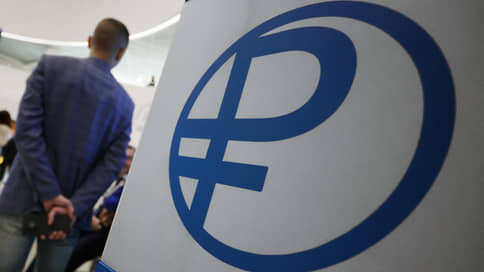No Caitlin Clark without roadmaker Molly Bolin

Earlier this month, Caitlin Clark (23) started her second season in the WNBA, the American basketball competition for women. In the many newsletters about women’s sport I am subscribed to, her name passes almost daily. « Season opening Clark attracts 2.7 million viewers on ABC. » « Average price tickets Clark matches is rising. » « Basketball card signed by Clark auctioned for 366,000 dollars. »
Clark pushes the American women’s basketball up. Viewing figures, sponsor amounts and spectators are Booming. And that while the maximum annual salary in the Wnba is converted ‘only’ 220,000 euros. Not in relation to the exponential growth of their sport, many players find, who demand that this will change if a new media deal will take effect next year. The WNBA receives 177 million euros from Disney, Amazon Prime and NBC for eleven years. At the previous deal, with ESPN, it was an amount of more than 29 million.
The enormous attention for players such as Clark, Angel Reese and A’ja Wilson creates the impression that the current basketball stars have made the sport great from nowhere. That is not true, the book to be published soon shows Becying Caitlin Clark: The Unknown Origin Story of A Modern Basketball Superstar, From the American sports journalist Howard Megdal. In an explanation of his book he writes: « Caitlin Clark would not be a success story without the century of women’s basketball history before her. »
Meggal, that female basketball for the New York Times and Sports illustrated Before he launched a newsletter in 2019, Clark has been following since her first year at the University of Iowa. He has interviewed and experienced her several times at press conferences. Saw how, despite towering expectations, she remained standing. No sportswoman since Billie Jean King has been tested for character. Not even gymnast Simone Biles, who withdrew during the Tokyo Olympic Games in 2021 because of mental problems.
The title of the book suggests that it is a biography. How did Clark become the basketball star that she is? What kind of family does she come from? In which heap Did she throw the first ball? What do colleagues and coaches say about her? Unfortunately, Megdal does not give answers to those kinds of questions. I read little about Clark that I didn’t know yet, except that she can play very nicely. She has a handicap of sixteen and her best laps are halfway through the eighty.
What Meggal does describe beautifully is the 133 -year -old history of women’s basketball in the US. Exceptional players pass by, whose names are not generally known, certainly not outside the US. That is because they did not get the opportunities and recognition – as is often the case in the development of a sport – that are given contemporary stars like Clark.
Take Molly Bolin Kazmer, according to Meggal the roadmaker for Clark. Just like Clark, she grew up in Iowa, the state that has been of great importance for the development of women’s basketball. If Kazmer had not had basketball, Meggal writes, Clark would not have been the star she is now. I would have liked to ask Clark if she knows which shoulders she is standing on, but for that she is too shielded by her agent and parents Brent and Anne. She gives relatively few interviews, certainly not to foreign media.
There is A beautiful black and white photo van Kazmer (then Bolin) in an American photo archive. With her right hand she presses a basketball against her bare leg. With her left hand she holds a glitter jacket that a stylist must have draped over her shoulder. In the Women’s Professional Basketball League (the precursor of the WNBA) she was often used for promotional activities. She was sex symbol and excellent sportswoman in one. To this day there is no basketball star with a higher seasonal average than she: 32.8. Even Clark can’t match that.
Megdal describes how Kazmer will play basketball in the hamlet of Moravia in the 1970s, because she craves attention and fame. She comes from a large, poor family. Tennis and golf lessons are too expensive, so she opts for basketball. In her free hours she practices on her own with a heap In the village.
At the age of thirteen she has several jobs, to be able to pay the registration fee for a basketball camp from the local university. The start of a sports career that has peaks, but especially valleys. In 1978 she was the first player with a contract in the WBL, converted 5,300 euros for a year, but after the third year the basketball association goes bankrupt. To make matters worse, she loses custody of her son after a divorce. According to the judge, a sex symbol cannot be a good parent (the ruling was later destroyed).
Girls in Iowa had a lot of freedom to play basketball – as early as 1907 the sport was practiced in more than three hundred secondary schools in that state – in the rest of the country things were very different. Competitions for girls were forbidden because that would affect their « feeling of femininity. » As a result, the sport developed much less quickly than could, says Megdal, who speaks of « systematic undermining by men. »
It reminded me of the documentary Copa 71, About the first unofficial World Cup for women in Mexico, visited by a record number of spectators, but never recognized by FIFA, who found women’s football a « indecent, immoral activity ». Even such a sport whose sporting and economic potential was smothered in the bud, but who does well in the resit decades later.
In a podcast a few years ago, Kazmer (67) shows itself as great. She says that as a young basketball star she understood how commerce works, and that she has seized all the opportunities that came by. « It was an exciting time, because the future unfolded before my eyes, but I just couldn’t reach it. » The barrier that once so recognized seems to settle for the designation ‘Wegbeerider for the Stars’.

/s3/static.nrc.nl/wp-content/uploads/2025/05/23084526/data132517189-aec886.jpg)

/s3/static.nrc.nl/images/gn4/stripped/data132707893-edb8d7.jpg)



